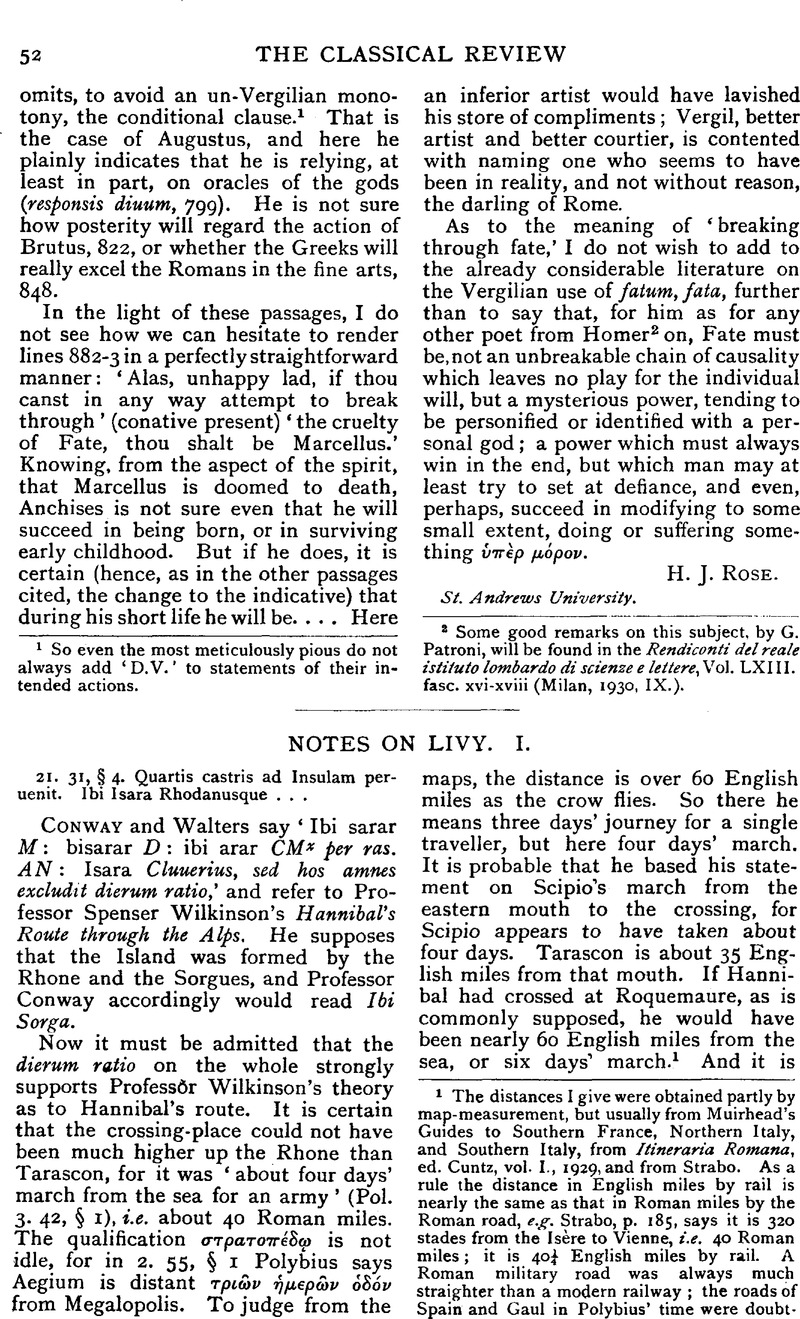No CrossRef data available.
Article contents
Notes on Livy. I
Published online by Cambridge University Press: 27 October 2009
Abstract

- Type
- Review Article
- Information
- Copyright
- Copyright © The Classical Association 1931
References
page 52 note 1 The distances I give were obtained partly by map-measurement, but usually from Muirhead's Guides to Southern France, Northern Italy, and Southern Italy, from Itineraria Romana, ed. Cuntz, vol. I., 1929, and from Strabo. As a rule the distance in English miles by rail is nearly the same as that in Roman miles by the Roman road, e.g. Strabo, p. 185, says it is 320 stades from the Isere to Vienne, i.e. 40 Roman miles; it is 40¼ English miles by rail. A Roman military road was always much straighter than a modern railway; the roads of Spain and Gaul in Polybius' time were doubtless more roundabout than Roman roads, but less so than railways. Hence distances given in English miles are usually greater than those Hannibal had to march.
page 55 note 1 Or it may be that Σκρασ in Polybius is sound, and that the corruptions in Livy arose from ![]() . The name Scara does not occur elsewhere, but that is not a sufficient reason for rejecting it.
. The name Scara does not occur elsewhere, but that is not a sufficient reason for rejecting it.
page 56 note 1 Where the P.L.M. railway crosses them, the Durance has a broad bed, most of it sandbanks or silt; the Drôme is not wide, but has a broad, shingly bed (cf. ‘saxa glareosa uoluens’, c. 31, § 11). But Ausonius' sparsis incerta Druentia ripis (Mosella, 479) corresponds to the rest of Livy's description. So in all likelihood the river really was the Druentia.




